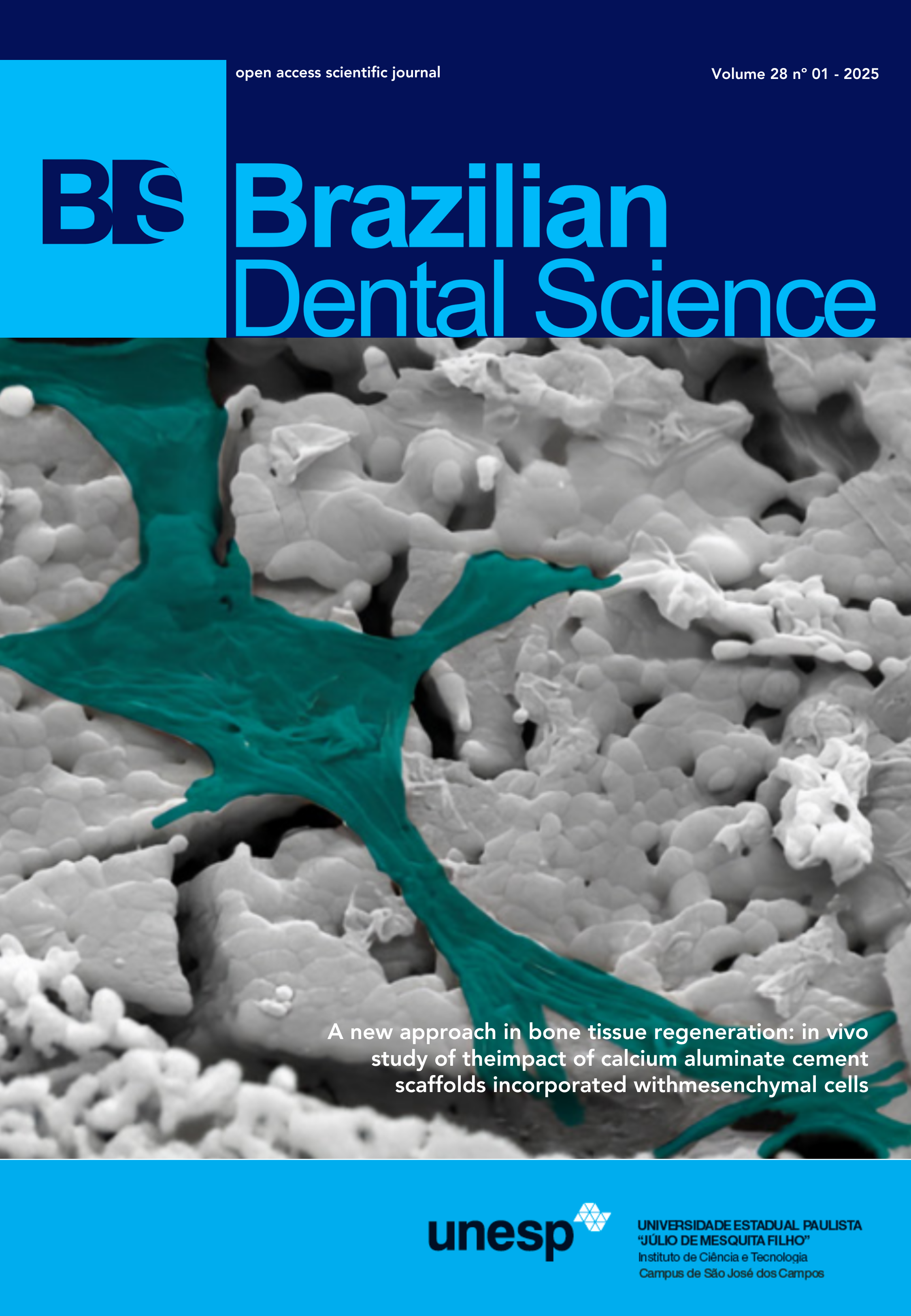Use of a gel containing a phthalocyanine derivative in palatal wounds after gingival graft removal: case series
DOI:
https://doi.org/10.4322/bds.2025.e4596Abstract
Background: Gingival grafts are used to correct mucogingival defects around teeth and implants, but post-operative morbidity, including pain and discomfort, still represents a clinical challenge. Studies using phthalocyanine derivatives (PHY) demonstrated antimicrobial effects, but these substances also seem to present beneficial properties in wound healing. Objective: This case series aimed to evaluate the use of a gel containing 0.1% PHY in the post-operative healing of gingival graft donor sites, with a focus on reducing discomfort and promoting healing. Material and Methods: Five healthy patients were submitted to standardized surgical procedures for root coverage with connective tissue grafts (de-epithelialization technique) and coronal advanced flap. After surgery, they received instructions to use 0.1% PHY gel in palatal donor sites. Clinical and somatosensory parameters were evaluated, as well as analysis of patient-centered outcomes (use of analgesics, difficulty of chewing and pain in the donor areas). Clinically, there was a progressive improvement in wound epithelialization over 30 days, reaching 100% of epithelialization. Results: There was a gradual reduction in the wound area, indicating a favorable trend towards complete healing. Somatosensory analysis revealed superior sensitivity in the donor areas after 60 days, with a decrease after 6 months. The use of analgesics was low, and pain scores were moderate. Conclusion: The use of 0.1% PHY gel seemed to be beneficial in promoting effective and rapid healing in palatal donor sites of gingival grafts. These results indicate that PHY gel may be a promising option for improving clinical results and patients’ quality of life following gingival grafting procedures.
KEYWORDS
Connective tissue; Palate; Phthalocyanine; Quality of life; Wound healing.
Downloads
Published
How to Cite
Issue
Section
License
Copyright (c) 2025 Brazilian Dental Science

This work is licensed under a Creative Commons Attribution 4.0 International License.
Brazilian Dental Science uses the Creative Commons (CC-BY 4.0) license, thus preserving the integrity of articles in an open access environment. The journal allows the author to retain publishing rights without restrictions.
=================




























